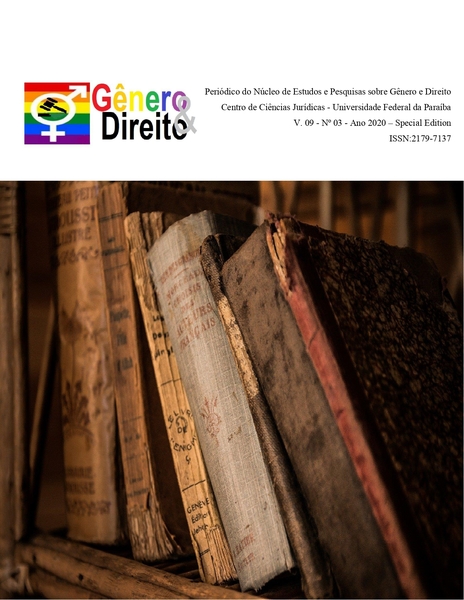THE LANGUAGE FEATURES OF SOCIAL MEDIA
DOI:
https://doi.org/10.22478/ufpb.2179-7137.2020v9n03.51941Palavras-chave:
social media, social network, language, virtual space, communication, virtual personality.Resumo
In Azerbaijan, as in many other countries, the number of internet users increases day by day. This means that Azerbaijani language spreads in the virtual space as the main communication language of these users. Issues of language usage cause several specific reasons in the virtual world. This creates new language trends linked to the social media phenomenon. Language in the virtual world is not only the mode of communication, but also the mode of self-expression of each internet user, particularly the member of the social networks. In the virtual environment people use language more creatively, than in real life. All these forms peculiar language and style of social media. Sometimes this peculiarity exceeds the bounds of rules and norms of traditional linguistics. Often it also affects the verbal environment of the real life. Therefore, new verbal trends, which we can observe in the virtual space, can both create new perspectives and incur some danger for preserving national linguistic traditions. Also, because of using social media as the tool of communication, adoption of their peculiar style turned into necessity. From this point of view, learning peculiar features of the social media is actual issue for contemporary linguistics. This article is following new linguistic trends observed in the virtual space. It provides detailed information about typical characteristics of the virtual communication, main and additional tools, cases of breaking borders of common language norms and their conditioning factors and new genres created in the virtual space. It also pays attention on the new development perspectives of national languages, created by social media. The article offers suggestions to gain benefits from these perspectives and preserve national languages from the negative impact of the virtual space.
Downloads
Referências
2. Language of the era of social networks: epoch-making changes (2014). // http:/¬/in¬os¬mi.¬ru/-worl¬d/201¬409¬29¬/223¬301606.html
3. Vinogradova T.Yu. (2015). The specifics of communication on the Internet http:/¬/www¬.phil-olo¬gy.¬ru/¬linguistics1/vinogradova_t-04.htm
4. Johnstone, Barbara (2016). Enregisterment: How linguistic items become linked with ways of speaking. LANGUAGE AND LINGUISTICS COMPASS, Volume: 10 Issue: 11 Pages: 632-643.
5. Angie Pascale (2012). How Social Media Is Changing Language Usage and What Marketers Need to Know About It //https://¬www.¬clickz.¬com/¬clickz/¬colu¬mn/2326906/how-social-media-is-changing-language-usage-and-what-marketers-need-to-know-about-it
6. Hilte, Lisa (2018)Adolescents' social background and non-standard writing in online communication DUTCH JOURNAL OF APPLIED LINGUISTICS, Volume: 7 Issue: 1 Pages: 2-25
7. Hilte, Lisa (2018). Social media writing and social class: A correlational analysis of adolescent CMC and social background,. Walter. International Journal of Society, Culture and Language Volume: 6 Issue: 2 Pages: 73-89 Published: 2018
8. John Mc Whorter (2015). Texting is killing language//http://www.ted.com/illing_language_jk
9. Rogacheva N. B. (2011). Types of secondary speech genres in Internet communication // Bulletin of the Saratov University. V. 11. Ser. Philology. Journalism, vol. 2 - p. 36
10. Kovpak D. V. (2012). Not those attacked! or How to deal with rudeness. Publishing House "Peter". s. 64 .207 p.- ISBN 9785459015478.Nick Bilton. Disruptions: Social Media Images Form a New Language.
11. Richard Dawkins (1989). The Selfish Gene, Oxford University Press.
12. Ukhova L.V.(2011). Specificity of the language of users of social networks //¬http:/¬/ww¬w.rus-nau¬ka¬.com/28_PRNT_2011/Philologia/7_93862.doc.htm
13. Breen, Patrick; Kelly, Jane; Heckman, Timothy; et al. (2016).Mining Pre-Exposure Proph-ylaxis Trends in Social Media. PROCEEDINGS OF 3RD IEEE/ACM INTERNATIONAL CONFERENCE ON DATA SCIENCE AND ADVANCED ANALYTICS, (DSAA 2016) Pages: 214-221
14. Boulton, C. A.; Shotton, H.; Williams, H. T. (2016).Using Social Media to Detect and Locate Wildfires 10 INT AAAI C WEB SO .
15. Dernoncourt, Franck, Lee, Ji Young; Szolovits, Peter. P. (2017). NeuroNER: an easy-to-use program for named-entity recognition based on neural networks. C EMP METH NA
16. Lample, G.; Ballesteros, M.; Subramanian, S.; et al. (2016). Neural Architectures for Named Entity Recognition. Proc. NAACL-HLT
17. Busch, Florian (2018).Digital writing practices and media ideologies of German adolescents, Special issue. The mouth. Critical studies on language, culture and society Volume: 3 Pages: 86-103, Critical youth languages
18. De Decker, Benny (2017). Global features of online communication in local Flemish: Social and medium-related determinants By:, FOLIA LINGUISTICA, Volume: 51 Issue: 1 Pages: 253-281
19. Hilte, Lisa (2018). Walter Expressive markers in online teenage talk: A correlational analysis. Nederlandse Taalkunde Volume: 23 Issue: 3 Pages: 293-323

